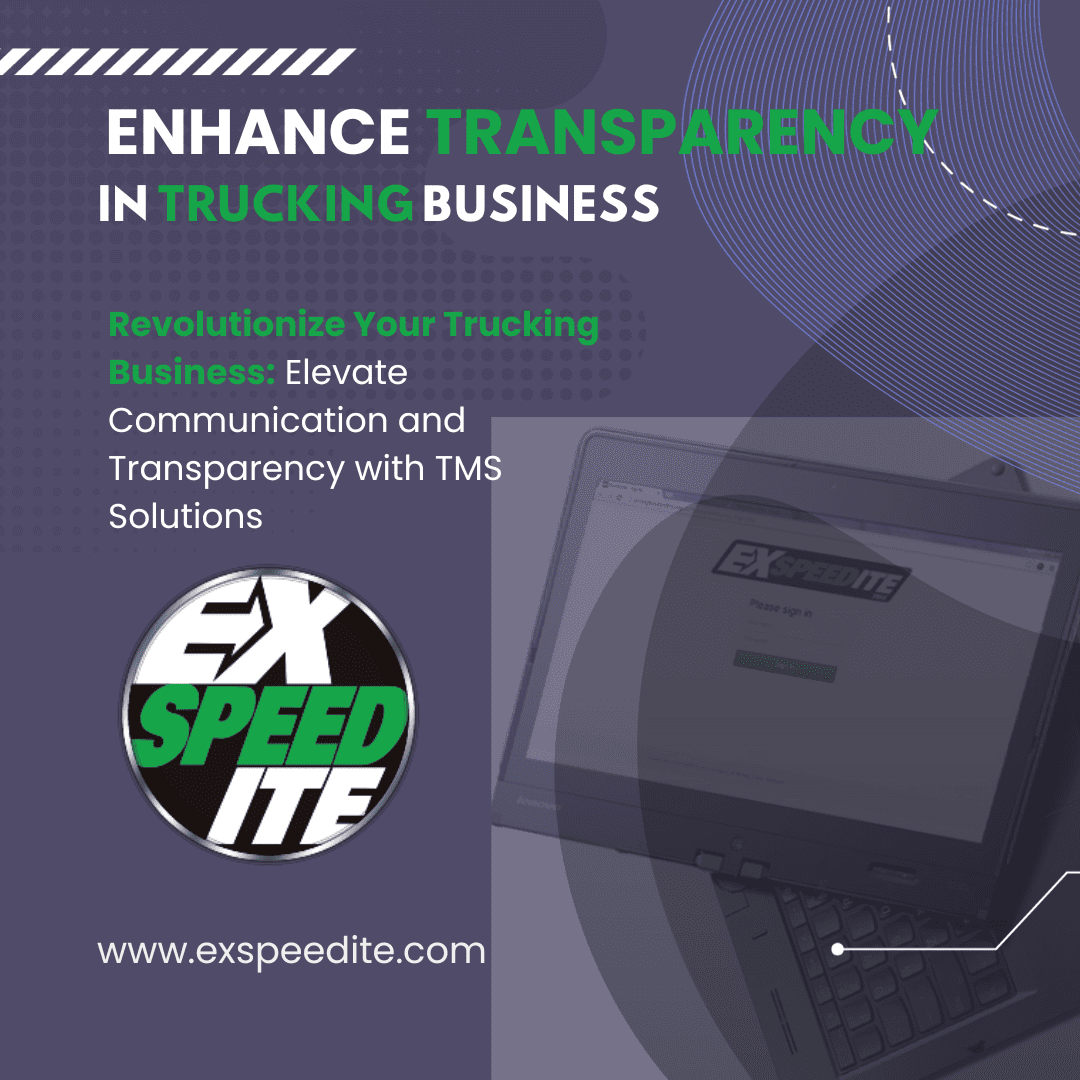Trucking software plays a pivotal role in enhancing communication between drivers, carriers, and dispatchers by providing streamlined and real-time information exchange. transportation management systems (TMS) offer a range of features to streamline logistics and transportation operations. Some common features include:
Here’s how it achieves this:
- Real-time Updates: Trucking software allows drivers to provide real-time updates on their progress, including their current location, estimated time of arrival, and any unexpected delays. Dispatchers and carriers can access this information instantly, improving visibility and decision-making.
- Assignment Notifications: Dispatchers can use the software to assign jobs and loads to drivers electronically. This ensures that drivers receive clear instructions promptly, reducing the need for phone calls or text messages.
- Messaging and Chat: Many trucking software solutions include built-in messaging and chat features. Drivers, carriers, and dispatchers can communicate securely within the system, discussing load details, route changes, or any concerns.
- Load Tracking: Trucking software often integrates with GPS and telematics systems, allowing for accurate load tracking. Dispatchers can monitor each load’s progress in real time and address any issues promptly.
- Document Sharing: Documents such as bills of lading, shipping instructions, and customs paperwork can be shared electronically through the software. This reduces the need for paperwork and ensures that all parties have access to essential documents.
- Routing and Navigation: Software can provide drivers with optimized routes, taking into account traffic conditions, road closures, and fuel-efficient options. Dispatchers can make real-time route adjustments as needed.
- Electronic Proof of Delivery (ePOD): Many trucking software solutions support electronic proof of delivery, allowing drivers to capture signatures and upload documents as proof of delivery. This information is immediately accessible to dispatchers and carriers.
- Automated Alerts and Notifications: Trucking software can send automated alerts and notifications for events such as load assignments, route changes, and delivery confirmations. This ensures that all relevant parties stay informed.
- Compliance Monitoring: The software can help monitor driver compliance with hours of service (HOS) regulations and other safety requirements, providing alerts when drivers approach their limits.
- Customer Access: Some software solutions offer a customer portal, allowing clients to access real-time shipment information and updates, enhancing transparency and customer service.
How Trucking Software Works For Logistic Or Supply Chain Industry?
Trucking Dispatch System: A robust trucking dispatch system is the linchpin of any efficient transportation operation. It centralizes and automates the allocation of loads to drivers, optimizing routes and enhancing real-time communication between dispatchers and drivers. This ensures on-time deliveries, minimizes manual interventions, and bolsters the overall efficiency of the logistics process.
Account Management System: An account management system is the financial backbone of a trucking business. It streamlines income and expense tracking, automates the invoicing process, and offers real-time financial visibility. This tool improves accuracy in financial reporting, reduces errors, and simplifies the management of a trucking company’s fiscal health.
IFTA Reporting: IFTA reporting is a critical task for trucking companies operating across jurisdictions. With dedicated IFTA reporting tools, the process becomes highly automated. The software compiles fuel purchase and mileage data, calculates tax liabilities for different regions, and generates comprehensive reports. This automation reduces the risk of errors, saves time, and ensures full compliance with IFTA regulations.
Driver Management System: Managing drivers effectively is essential for any trucking operation. A driver management system streamlines driver assignment, provides real-time updates on job statuses, tracks expenses, and ensures compliance with Hours of Service (HOS) regulations. This system simplifies the coordination of driver activities, which is crucial for safe and efficient trucking operations.
Trucking Maintenance: Proper maintenance is vital for the safety and reliability of a trucking fleet. Trucking maintenance systems help companies keep track of scheduled maintenance for all their trucks. They provide automated reminders for routine maintenance, reducing the risk of unexpected breakdowns, costly repairs, and operational disruptions.
Load Board: Load boards offer a digital marketplace for shippers, brokers, and carriers to connect and negotiate load assignments. Integrating with load boards simplifies the process of finding and securing loads, improving operational efficiency and revenue generation for trucking companies.
Business Intelligence: Business intelligence tools offer powerful insights into a trucking operation’s performance. By analyzing key performance indicators (KPIs) and historical data, trucking businesses can make informed decisions and continuously refine their operations. These insights help identify areas for improvement and optimize resource allocation.
Driver Mobility Solutions: Driver mobility solutions empower drivers to dispatch, invoice, and add expenses from anywhere, using mobile devices. These solutions provide flexibility and accessibility, increasing driver efficiency and reducing administrative burdens, ultimately contributing to improved overall productivity.
Digital Document Management: The digitization and centralization of documents are essential for efficient record-keeping. Digital document management systems securely store and provide easy access to essential documents, reducing paperwork, the risk of document loss, and simplifying record-keeping and compliance efforts.
Integrations: Integrations with other systems, such as Enterprise Resource Planning (ERP) and Warehouse Management Systems (WMS), are crucial for operational efficiency. Seamless data flow between systems eliminates manual data entry, ensures accuracy, and streamlines various business processes, contributing to a more cohesive and efficient operation.
